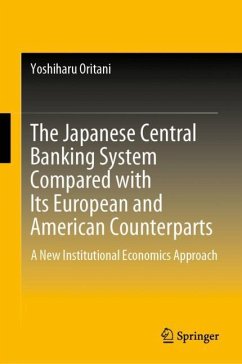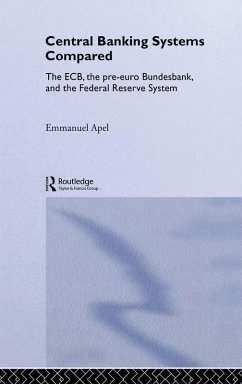
The Japanese Central Banking System Compared with Its European and American Counterparts
A New Institutional Economics Approach
Übersetzung: Tanimoto, Kazuyo W.
Versandkostenfrei!
Versandfertig in 6-10 Tagen
91,99 €
inkl. MwSt.
Weitere Ausgaben:

PAYBACK Punkte
46 °P sammeln!
This book uniquely explores the role and governance mechanism of central banks by applying new institutional economics (NIE). Simultaneously, the book tests the analytical viability of NIE when applied to an organization that has both public and private characteristics. Special attention is paid to the Bank of Japan (BOJ) based on the author's 30 years of work experience and "participant observation" there, touching upon discussion of central bank independence. The book argues that central bank independence cannot be defended solely by law, and a mechanism to eliminate requests from politician...
This book uniquely explores the role and governance mechanism of central banks by applying new institutional economics (NIE). Simultaneously, the book tests the analytical viability of NIE when applied to an organization that has both public and private characteristics. Special attention is paid to the Bank of Japan (BOJ) based on the author's 30 years of work experience and "participant observation" there, touching upon discussion of central bank independence. The book argues that central bank independence cannot be defended solely by law, and a mechanism to eliminate requests from politicians needs to be embedded within the governance structure.
The book also provides a comparative analysis between the BOJ and central banks in Europe and the USA. In reviewing the global financial crisis of 2008-2009, it suggests possible measures based on behavioral economics and public choice theory. These theory-based analyses provide useful insights when considering matters such as whether a central bank should issue electronic money or the European system of central banks could be established in Asia.
The book also provides a comparative analysis between the BOJ and central banks in Europe and the USA. In reviewing the global financial crisis of 2008-2009, it suggests possible measures based on behavioral economics and public choice theory. These theory-based analyses provide useful insights when considering matters such as whether a central bank should issue electronic money or the European system of central banks could be established in Asia.














